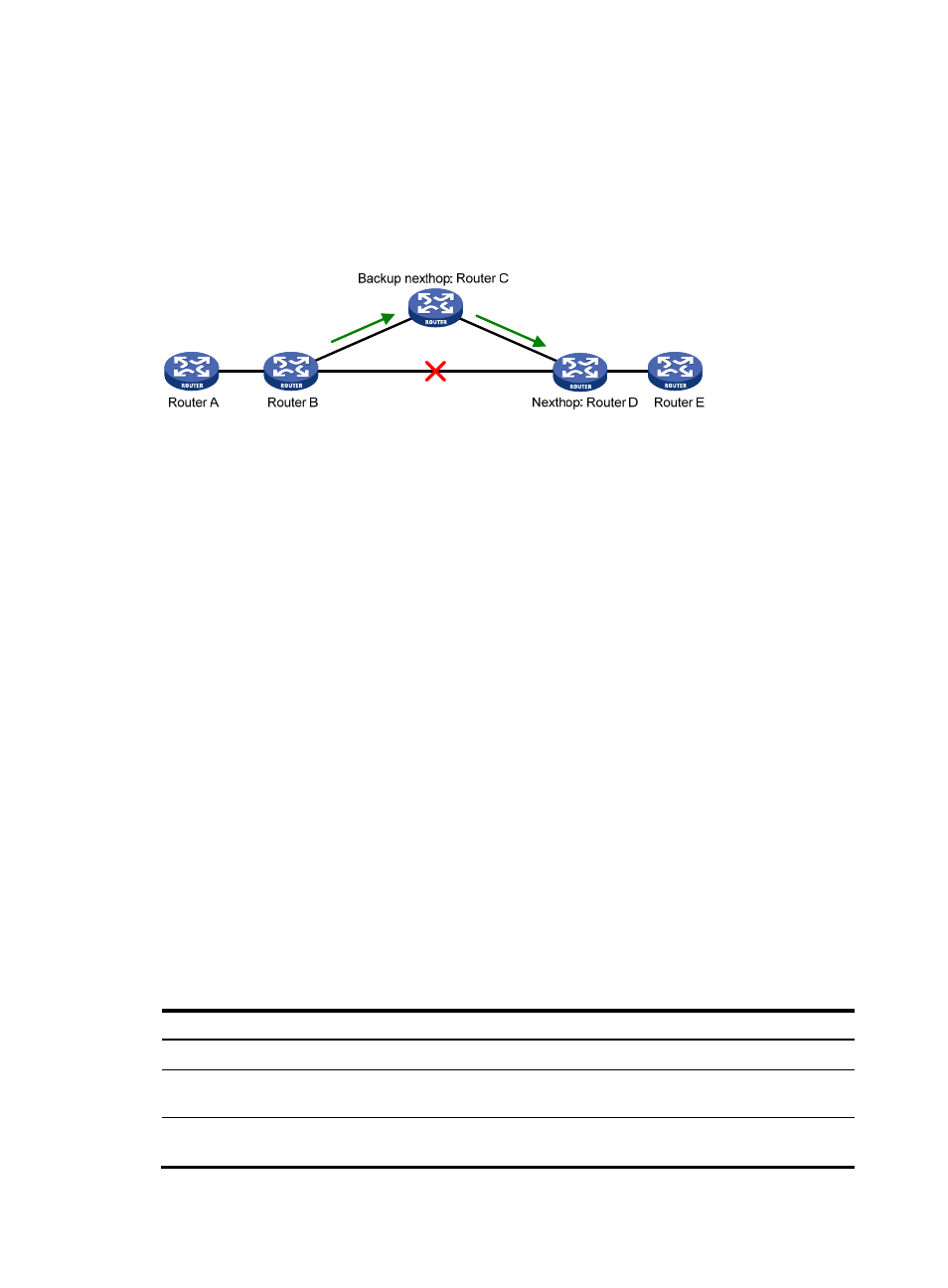Configuring ospf frr, Configuration prerequisites, Configuration guidelines – H3C Technologies H3C S5560 Series Switches User Manual
Page 115: Configuration procedure

99
Configuring OSPF FRR
A link or router failure on a path can cause packet loss and even routing loop until OSPF completes
routing convergence based on the new network topology. FRR uses BFD to detect failures and enables
fast rerouting to minimize the impact of link or node failures.
Figure 21 Network diagram for OSPF FRR
As shown in
, configure FRR on Router B by using a routing policy to specify a backup next hop.
When the primary link fails, OSPF directs packets to the backup next hop. At the same time, OSPF
calculates the shortest path based on the new network topology. It forwards packets over the path after
network convergence.
You can configure OSPF FRR to calculate a backup next hop by using the loop free alternate (LFA)
algorithm, or specify a backup next hop by using a routing policy.
Configuration prerequisites
Before you configure OSPF FRR, complete the following tasks:
•
Configure IP addresses for interfaces to ensure IP connectivity between neighboring nodes.
•
Enable OSPF.
Configuration guidelines
•
Do not use FRR and BFD at the same time. Otherwise, FRR might fail to take effect.
•
Do not use the fast-reroute lfa command together with the vlink-peer or sham-link (see MPLS
Command Reference) command.
•
When both OSPF PIC and OSPF FRR are configured, OSPF FRR takes effect.
Configuration procedure
Configuring OSPF FRR to calculate a backup next hop using the LFA algorithm
Step Command
Remarks
1.
Enter system view.
system-view
N/A
2.
Configure the source address
of echo packets.
bfd echo-source-ip ip-address
By default, the source address of echo
packets is not configured.
3.
Enter interface view.
interface interface-type
interface-number
N/A